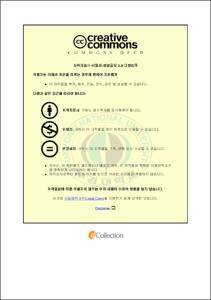제 2세대 자기연마가공에서 자기력 특성 및 실리콘 겔의 점성에 관한 연구
- Alternative Title
- A Study on Effect of Magnetic Flux Density and Viscosity of Silicone Gel Agent on Second Generation MAP
- Abstract
- The magnetic abrasive polishing(MAP) process assisted by magnetic field was proposed for producing a highly-finished surface by removing materials using magnetic abrasives in the presence of magnetic field. This process can be employed to finish most mechanical parts. The MAP processes many attractive advantages, such as self-sharpening, self-adaptability and controllability of cutting edges. And also the polishing tool requires neither compensation nor dressing because abrasives that float over workpiece are not restricted with a formal shape, which can save producing time and reduce large waste of producing expenses. Thus MAP process can use as means of polishing, deburring, removing reacting layers from many parts. Shimura et al studied about basic principle of the magnetic abrasive finishing process and concluded that the stock removal and surface roughness value varied according to the change of working gap between tool and workpiece, particle diameter, and magnetic flux density on workpiece. Wang et al developed a novel magnetic abrasive medium to resolve the efficiency and recycling problem of magnetic abrasive finishing(MAF) of inner pipe using silicone gel to mix steel grit and silicone carbon. As a result of study, gel abrasive have a good effect on the surface roughness and material removal rate because of the flexible property of the gel abrasive.
Efficiency of MAP is closely dependent upon a kind of magnetic abrasive used and magnetic force during the MAP process. Magnetic abrasives of MAP can divided into two parts. The first is unbounded magnetic abrasive(UMA), in which this magnetic abrasive is applied to the stirring method in order to mix ferromagnetic particles such as Fe-powder and the abrasive. Therefore, the abrasive is not physically bounded to the ferromagnetic material. So, these abrasives are easily flown away from magnetic field by the centrifugal force in MAP. Therefore, the finishing effect is unstable. The other magnetic abrasive is bounded magnetic abrasive(BMA) which uses the ferromagnetic matrix to hold the abrasive and forms as abrasive medium by sintering, chemical or other procedure. These magnetic abrasive have an excellent bonding force to the abrasives and stable polishing effect during MAP process. Despite of these advantages, BMA require a long time and high cost to produce. Furthermore, this magnetic abrasive type has large rigid particles more than UMA. BMA is inadequate to polish a complex surface such as mold surface.
It is difficult to polish the plane of non-magnetic materials using MAP process, because this process is fundamentally possible by help of magnetic force. Especially, UMA used in MAP of non-magnetic material and lower-permeability material break away from the working area more and more because of lower magnetic force on the workpiece. In this study, silicone gel used as medium of UMA to reduce the number of abrasives particle which is flown away from magnetic field and increase the cutting force on MAP of lower-permeability materials. Therefore, the evaluation of MAP of alumina plate was carried out by design of experiment and prediction model was developed by S/N ratio and 1st order response model.
- Issued Date
- 2012
- Awarded Date
- 2012. 2
- Type
- Dissertation
- Publisher
- 부경대학교 일반대학원
- Alternative Author(s)
- Kang Han Sung
- Department
- 대학원 생산자동화공학과
- Advisor
- 곽재섭
- Table Of Contents
- Nomenclature ⅲ
List of tables ⅳ
List of figures ⅴ
List of photographs ⅶ
1. 서 론 1
2. 이론적 배경 4
2.1 비자성체의 가공 시 발생하는 연마압력 4
2.2 자속밀도가 미치는 영향 6
2.3 매개체의 영향 8
3. 자기연마에서 자기테이블을 이용한 자기력 증진 9
3.1 자기테이블의 장치구성 9
3.2 자기테이블의 극성제어 13
3.2.1 극성제어를 통한 자기력향상 시뮬레이션 및 결과 13
3.2.2 다중 배열 전자석 테이블의 극성제어와 자기력향상 19
4. 자기연마에서 실리콘 겔의 연마가공 특성평가 23
4.1 실험장치의 구성 23
4.2 자기연마에서 실리콘 겔의 효용성 검증 28
4.2.1 매개체에 종류에 따른 연마 특성 28
4.2.2 매개체의 온도에 따른 연마 특성 34
4.2.3 실리콘 점성에 따른 가공특성 41
5. 공정최적화 및 표면거칠기 예측모델 개발 44
5.1 실험계획법을 이용한 가공인자의 특성 평가 44
5.2 결과 및 평가 47
5.3 표면거칠기 예측모델의 개발 및 검증 52
5.3.1 S/N비를 이용한 예측모델개발 52
5.3.2 1차 반응표면모델을 이용한 예측모델 53
6. 결론 57
REFERENCES 59
ABSTRACT 62
- Degree
- Master
- Files in This Item:
-
-
Download
 제 2세대 자기연마가공에서 자기력 특성 및 실리콘 겔의 점성에 관한 연구.pdf
기타 데이터 / 13.91 MB / Adobe PDF
제 2세대 자기연마가공에서 자기력 특성 및 실리콘 겔의 점성에 관한 연구.pdf
기타 데이터 / 13.91 MB / Adobe PDF
-
Items in Repository are protected by copyright, with all rights reserved, unless otherwise indicated.